Another important foundational aspect of account management—and sales itself—is the handling of quotas and forecasting.
From my observation, only a few companies manage the problems for quotas and forecasting well. This is because there are two groups with seemingly conflicting interests: the sales team and company and sales management. Salespeople say that quotas are too high and are not achievable, whereas management insists that quotas are not high enough. And it’s fascinating that after so many years, and so many books, seminars, and training on sales, we still have the majority of salespeople underperforming.
The truth is that too much of the time, quotas, forecasts, targets, and goals are often generated out of wishful thinking. Someone will simply say, “We need to grow by 10 percent per year” and this is shoved in as a quota and forecast. This has never worked, as it’s based primarily on guesswork.
To start with, it doesn’t work to push quotas and targets onto salespeople without their agreement. Salespeople, instead of just carrying on and going for the targets, push back against management. Management comes to accept a “status quo” of salespeople never actually achieving their quotas.
These subjects require more rational—and less emotional—thinking. We need a scenario in which everyone can agree, through logic. That doesn’t mean that there will never be tension between sales management and salespeople, even with such a scenario in place. Such tension is actually healthy and is like the two terminals of a power station that, between them, produce power. But there will be trust in place, and both sides will be moving confidently forward.
Let’s take a look at how we can obtain that rational, logical scenario.
The Target
In Pipeliner CRM, we work with 5 different types of targets:
Weighted Target — equal to the sum of the total opportunity values in each sales stage, multiplied by the probability of closure for that sales process stage.
Ranked Target — based on the probability used by the ranking – number of stars up to 5- selected by the sales rep for each opportunity. Each star is worth 20 percent. Ranked Target multiplies the percentage by the value of that opportunity. Probabilities for all opportunities are added together to achieve the overall Ranked Target.
Balanced Target — an average of both the Weighted Target and the Ranked Target.
Unweighted Target — the total value of all open opportunities in the pipeline.
Won Target — the amount that has already been won.
The Won Target is the one we’ve already reached. The win rate is available in the Pipeliner Archive—another significant feature not available in any other CRM—along with the loss rate. These can be compared. The Won Target is very useful because it shows us the amount of Unweighted Target we need to reach the target we have set for the month, quarter, or year.
The Weighted Target indicates the effectiveness of the sales process we have established, as it shows us how much in the process we have to optimize. It takes into account the duration of each opportunity in each step.
The Ranked Target is based on the perception of the salesperson.
The Balanced Target is calculated by combining the Weighted Target and the Ranked Target together and is the most conservative. Utilized with the Power Panel filters, it is the most realistic overview in the Sales War Room.
Utilizing Sales History
In order to accurately understand how much-unweighted value you need to achieve a target, you need to look back at your history. What percentage of your target, overall, have you achieved in the past? This is a typical lagging indicator—meaning an indicator that shows what we have previously achieved. As you improve, you’ll need less unweighted opportunity value to reach your target, because you’ll be incrementally optimizing your conversion rate.
Setting the Quota
The quota and the forecast are two very different things. First, let’s have a look at the quota.
The quota must be set in relation to the achievement rate of the salesperson for whom you’re setting the quota. For example, you wouldn’t set the same quota for a brand new salesperson as you would for one who has been on the job for ten years. The sales manager, or whoever is responsible for setting the quota, must look at the past record of the salesperson. They must consider the sales yield—the time it takes a salesperson to start achieving quotas. If a salesperson is issued too difficult a quota for them to attain, they won’t reach it. The more this occurs, the more negative attitudes are created within that salesperson because they’re failing.
Pipeliner Quota Tool
Within Pipeliner CRM, we’ve created a tool for setting quotas that makes doing so far easier and more accurate.
With this tool, you can set up a quota to be monthly, quarterly, and yearly. You can then add in the various salespeople that will contribute to making this quota, and set and adjust quotas for each person. The overall quota, as well as the individual quotas, can be increased or decreased individually, or by percentage affecting everyone.
With the Performance functionality, you have, for each person, the weighted average of what they have already achieved so it can be compared.
Figuring a quota this way is more realistic than past “guesstimate” methods. Using this tool, it is far easier to get the salespeople in agreement with management as to what the quota should actually be. This agreement means that everyone can simply get on with making the quota instead of arguing about it.
It’s clear that you cannot run a business without a foundation of incorrectly calculated numbers. Pipeliner CRM’s quota tool utilizes the underlying sales figures of what has been won in the past. You then know what can be forecast with some reality. For example, if you know that your closing ratio has been 25 percent in the past, you need 4 times more opportunity value in the system to reach the quota.
If you’re just starting out, you won’t of course have any figures from the past, and each salesperson will be growing by 100 percent. But simply make sure that sales are being made to the company’s actual buyers (not colleagues, friends, and relatives), and the figures will even out and you’ll be able to calculate precise closing ratios. Quotas will probably be too high in the beginning but can be made more accurate over time.
A quota is a commitment and an agreement that should be made between the company and the salesperson. They should sign a document agreeing to it.
Forecasting
When salespeople are issued quotas, they will then come up with their own individual forecasts. With Pipeliner’s different target types, forecasts can be matched immediately against what opportunities are actually in the pipeline. You’ll be able to see who is forecasting accurately, and where you have issues with salespeople overconfident about their opportunities. You’ll have to work with such people to be more realistic in their forecasting. This will also lead to the person being more realistic with the selling activities, as forecasting should always lead to action.
There is equally an issue if a salesperson is constantly under-forecasting and over-achieving. They might be trying to cheat the system a little bit in order to be seen as more of a sales champion, or not to have attention from management.
Let’s say a person has a quota of $300,000 for the month, and their forecast is the same. Over the month, the person ends upbringing in $150,000. That means there’s a short of $150 in wrong forecasting, and the company is utilizing misleading numbers in prediction.
As a manager, you want to make sure you’re working with reliable data. Whenever numbers are updated in the system, it leads to realistic forecasting. The target comes from past experience, along with visualizing the number the company wants to reach. The forecast should be constantly adjusted to the opportunities currently in the pipeline. If you find that you don’t have the opportunities in the pipeline needed to reach a quota, you need to take immediate action. That’s a challenge everyone in a sales scenario faces.
Pipeliner Forecasting Tool
At the top of Pipeliner’s new forecasting tool is a line graph which, in real-time, reflects the current sales forecasts out through time. We did that so that sales and company management could always view what was expected. The better the daily process, pipeline forecasting, and analytics, and the more these factors work together, the more accurate the forecasts will be.
In public companies, there is almost zero tolerance for inaccurate forecasts, as investors won’t brook an even 5 percent variation from a forecast. Private companies, however, rarely operate with that kind of accuracy. With our forecasting tool, we are aiming to bring this enterprise-level professionalism to small and medium businesses. If smaller companies could operate with such precise forecasts, they wouldn’t encounter so many problems. Well, now they can.



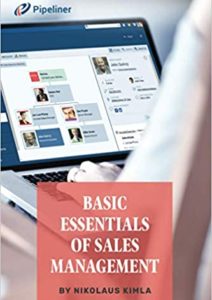
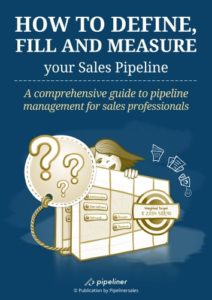

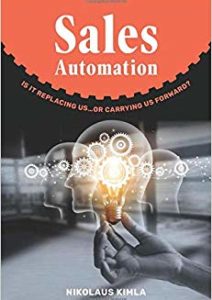
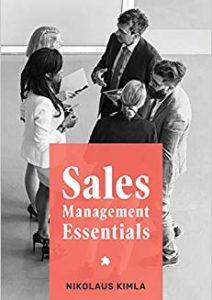




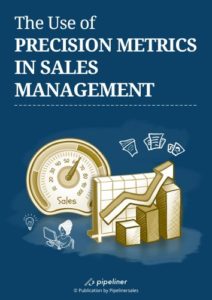


Comments